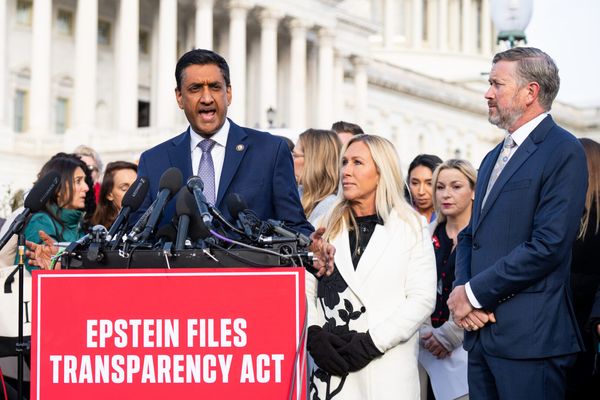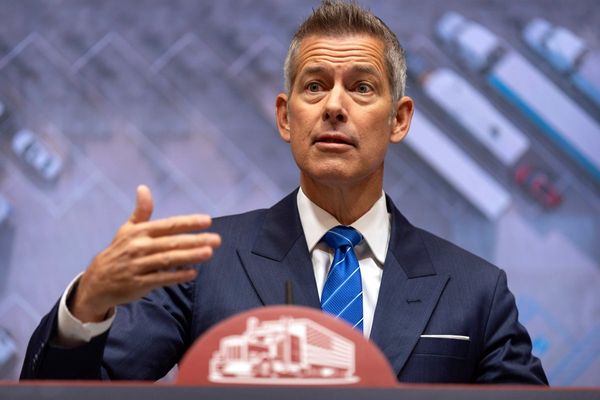
Recent moves by prominent Coalition figures Andrew Hastie and Barnaby Joyce have highlighted a major faultline within the Coalition between conservatives who want to scrap net zero and curtail immigration and moderates who believe they need to regain voters in urban seats where there is strong support for action on the climate emergency.
That faultline ominously shook further on Sunday afternoon, with David Littleproud announcing the National party was officially abandoning its commitment to reach net zero by 2050.
Assuming the Coalition stays together, is it more likely to regain government by targeting voters who have made the jump to One Nation on the right, or to the teals on the centre?
Data from the 2025 election suggests targeting the centre will be a far easier task.
Most One Nation votes return to the Coalition
This point is obvious to anyone who has looked at voter preferences in any recent election. The Coalition shouldn’t be too worried about losing voters to One Nation, as the 2025 numbers show that One Nation voters are much more likely to preference the Coalition than they are Labor.
In 2025, 68% of One Nation votes came back to the Coalition, while 25% of One Nation voters preferenced Labor.
Of course, One Nation could grow its primary vote in more seats to the point where it directly challenges the major parties. This happened in 2025 when One Nation was up against Labor in the seat of Hunter and against the Coalition in Maranoa.
However, the prospect of One Nation actually winning in these seats, or others, is historically unlikely. One Nation has never won a lower-house seat at a federal election, even at the height of its popularity.
There are more seats to be gained from teals
What would happen if the Coalition convinced all One Nation voters, even those who preference Labor, to preference the Coalition instead?
Let’s compare this hypothetical scenario with a scenario where the Coalition gets all the preferences from teal voters. Additionally, in seats where the the Coalition is up against the teals or One Nation in the final two – and therefore converting preference votes to the Coalition can’t be done – let’s give the Coalition a swing of 5% from One Nation or teals voters.
This is a pretty crude hypothetical as it doesn’t attempt to model changes in preference flows and the preference counting order. Any of the community-backed, climate-action-supporting independents are being referred to as teals for ease of understanding, while noting some candidates reject that label.
In this scenario the Coalition picks up six seats by targeting teal voters, compared with four from targeting One Nation voters.
So it appears there’s more to be gained from picking up teal voters than One Nation voters. Also, given that all of the teal seats used to be held by the Coalition, it’s not a stretch to imagine that they could be won back if the party actually made an effort to address why voters in these electorates turned away from them in the first place.
However, a bump of six seats isn’t going to help the Coalition form government – that would only bring them to 49 overall.
What if the Coalition targeted outer suburbs?
So what if the Coalition ditched net zero and went harder on immigration and housing. Could they gain enough seats from Labor to form government – particularly in areas that have a higher One Nation vote where people might be more receptive to these policies?
This is unlikely for a few reasons.
The Coalition just tried the strategy of targeting outer-suburban Labor seats at the 2025 election and failed miserably. Its policies were already right of Labor on immigration and climate – and not only did it fail to win seats, its vote went backwards in many seats.
That’s not to say that these policies were the deciding factor at the 2025 election, just that adopting more extreme versions seems unlikely to shift votes in these areas.
The other reason this strategy is a harder road to take is simple political calculus. The following chart shows all of the seat outcomes at the 2025 election, coloured by the winning party, with the winning vote percentage on the vertical axis and One Nation primary vote on the horizontal axis:
The Coalition needs at least 33 Labor (red) or independent (pink) seats to form a majority and win government. The majority of marginal Labor and Independent-held seats are at the bottom left – areas in which the One Nation vote is lower.
In contrast, the areas over on the right in which the One Nation vote is highest – areas where there are a decent amount of voters who are already on board with ditching net zero and cutting immigration – are either already held by the Coalition, or are held by Labor with a hefty margin.
It is worth noting that there are a few seats in which the One Nation vote increased and the Labor vote decreased at the last election – and quite a few of those, such as Bullwinkel and Pearce, are in Western Australia. So it makes sense that Andrew Hastie, a Western Australian politician, would be looking to capitalise on that shift. But still, there just aren’t enough seats like this nationally.
One Nation voters aren’t all tied to the ‘right wing’
It is also a mistake to look at One Nation voters as a single, cohesive group of voters on the left-right spectrum. There is a not-insignificant portion of people who vote One Nation as a protest vote against the major parties, and would rather preference the Greens, a far more left-wing party, above the Liberals or Labor.
We can see this most clearly in the preference figures for seats like Ryan in the 2025 election, which ended up with a Greens versus Liberal contest. About 18% of One Nation voters preferenced the Greens over the Liberals:
Similarly, in contests where the two-party preferred count is between Labor and the Greens, we can see One Nation voters preferencing the Greens by anywhere up to 45%.
Thanks to Dr Luke Mansillo for providing feedback on an early draft of this analysis. Any errors remain the author’s.







